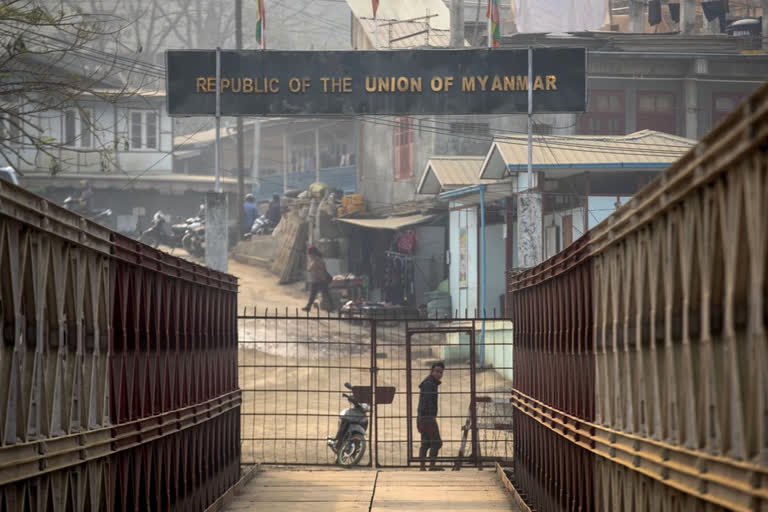SKB: Do you think China’s efforts to link up with East Asia in Myanmar, Laos, Cambodia, etc. up to Singapore pose a threat to India’s flagship infrastructure “Act East” plan?
RD:Well, both economic and strategic interests of the two giants—China and India—are in essence identical in their pursuit of linkages with the ASEAN bloc. As India looks eastward, it signals its contiguity with Southeastern countries to foster age old bonds of history, culture, religion and economy, and forge new ties of trade and investment in mutual interest. For India, Myanmar and Bangladesh are traditionally and historically, and hence naturally, partners in shared destiny, and as such need to optimize their gains from the relationship. With its deep pockets China has moved ahead to reap not just economic gains but overshadow India.
For China, the ten-member group (ASEAN) implies a big, promising market for its capital, industry, labour, besides a strategic sphere of influence. Ambitious road and rail projects being developed by China in the region represent that urge and outlet, and establish linkages with Chinese mainland. The highly ambitious 6,500 km SKRL (Singapore-Kunming Rail Link) provides connectivity to China through Kunming, capital city of Yunnan Province. Large investments made by China in ‘high speed’ rail corridors being built in Laos, Cambodia, Thailand, Malaysia, Indonesia are prima facie unviable and may involve some of the countries in a debt trap.
SKB: The flashpoint in the recent and ongoing clash between India and China has been the race to complete infrastructure projects largely road and rail networks. Is there finally a proper recognition of the fact that infrastructure may be the real projection of the status of economic and military might?
RD:Economic and military might of any nation is closely intertwined today more than in the past. Recall Mao ZeDong’s oft-quoted maxim that power flows from the barrel of the gun. We know the velocity and power of the gun is predicated on the economic strength of the nation. That is why the buzzword in the context of Chinese incursions on India’s northern borders is that India’s best defence against Chinese adventurism is its sustained 8 plus per cent GDP growth. Economic power is the very sine qua-non of military power, and economic growth rides on infrastructure as its life-blood.
Buoyed by rapidly evolving technological marvels, modern warfare is emerging as a highly swift and nimble game for commanders. While remote controls, floating machines or drones play an increasingly vital role, as also the air force and missiles, the crux of the battle perforce involves not just armoured fleet and artillery firepower, but also the foot soldiers of the mobile and other infantry along with constant ordnance support and supplies. Construction and maintenance of infrastructure of roads and bridges, railway links and airports to support the military in the frontlines has become an integral part of defence preparedness.
China’s spectacular military might has been built on phenomenal economic growth over the last 40 years which in turn has been facilitated by unprecedented expansion of road, railway, port, airways networks. So equipped with requisite resources, China has started flexing muscles in pursuit of its vaulting ambition.
India realized its inadequacies of infrastructure to suitably build its defences and imparted a sense of urgency to construct and complete the basic infrastructure wherewithal and arrange for the firepower to be enhanced.
SKB: How seriously do you take the “String of Pearls” encirclement theory? Where do you see the evidence?
RD:It is common knowledge now that Chinese overtures in developing a string of maritime projects, ports in different parts of the world are guided not merely by logistics logic for its trade, especially in energy, as through the Malacca Straits. For China, there is a clear blurring of its maritime transit passage distinct from its strategic, naval dockyards and manoeuvres.
It is not just commercial interest that drove China to dive into waters all around India, be it Maldives or Hambantota in Sri Lanka, Gwadar in Pakistan, Chattogram in Bangladesh, Sittwe and Kyaukpyu in Myanmar.
